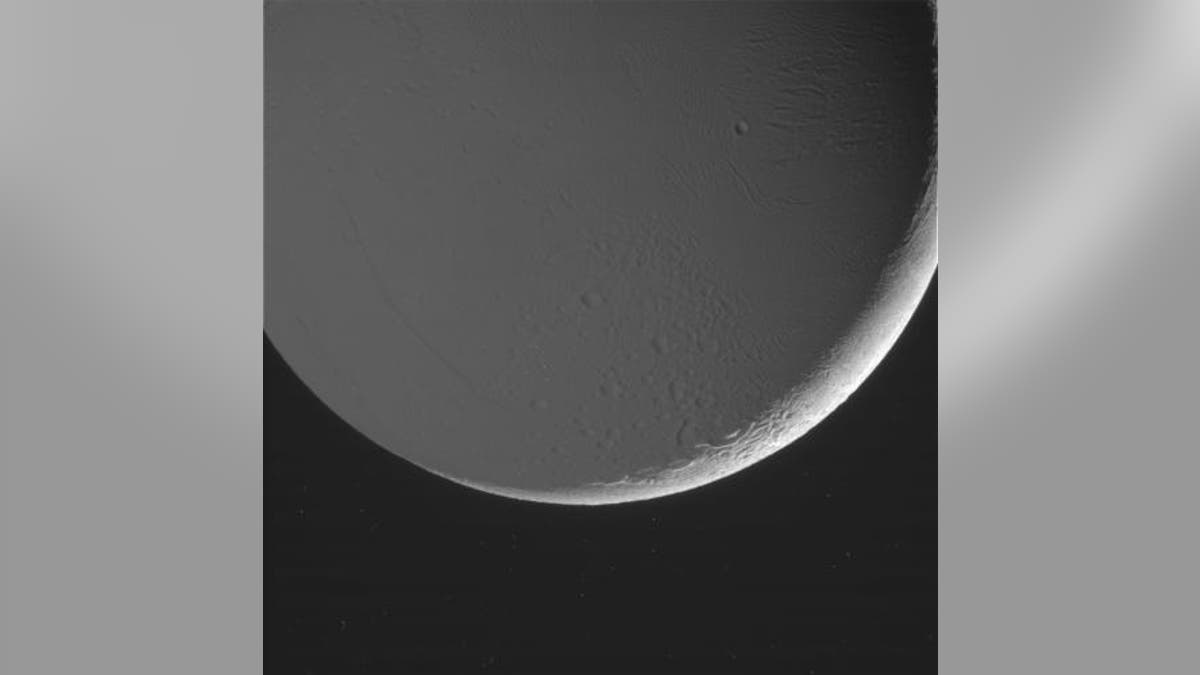
Image of Enceladus taken on Oct. 14, 2015 and received on Earth Oct. 15, 2015. (Image Credit: NASA/JPL-Caltech/Space Science Institute)
NASA has released striking new images from the Cassini spacecraft’s flyby of Saturn’s moon Enceladus.
Cassini has begun its final tour around Saturn's large, icy moons making the first of several encounters with Enceladus early Wednesday. The flyby took the spacecraft to an altitude of 1,142 miles above the moon's surface. In earlier encounters with the moon, Enceladus was hidden by wintry darkness.
Related: Cassini gets close encounter with Saturn's moon Enceladus
The images, which were taken Wednesday and received on Earth Thursday, show the moon’s cratered surface in striking detail.

The related image of Enceladus' surface was taken on Oct. 14, 2015 and received on Earth Oct. 15, 2015. (Image Credit: NASA/JPL-Caltech/Space Science Institute)
Since Cassini's 2005 discovery of continually-erupting fountains of icy material on Enceladus, the Saturn moon has become one of the most promising places in the solar system to search for present-day habitable environments. Mission scientists announced evidence in March that hydrothermal activity may be occurring on the seafloor of the moon's underground ocean. In September they broke news that its ocean -- previously thought to be only a regional sea -- was, in fact, global.
Wednesday’s flyby sets up what NASA is calling the main event, a flyby of Enceladus on Wednesday, Oct. 28, during which Cassini will come dizzyingly close to the icy moon, passing a mere 30 miles above the moon's south polar region. During this encounter, Cassini will make its deepest-ever dive through the moon's plume of icy spray, collecting images and valuable data about what's going on beneath the frozen surface. Scientists are hoping to gather evidence of how much hydrothermal activity is occurring in the moon's ocean, and the amount of activity impacts the habitability of Enceladus' ocean.
In its final close flyby on Dec. 19 Cassini will examine how much heat is coming from the moon's interior from an altitude of 3,106 miles.



















